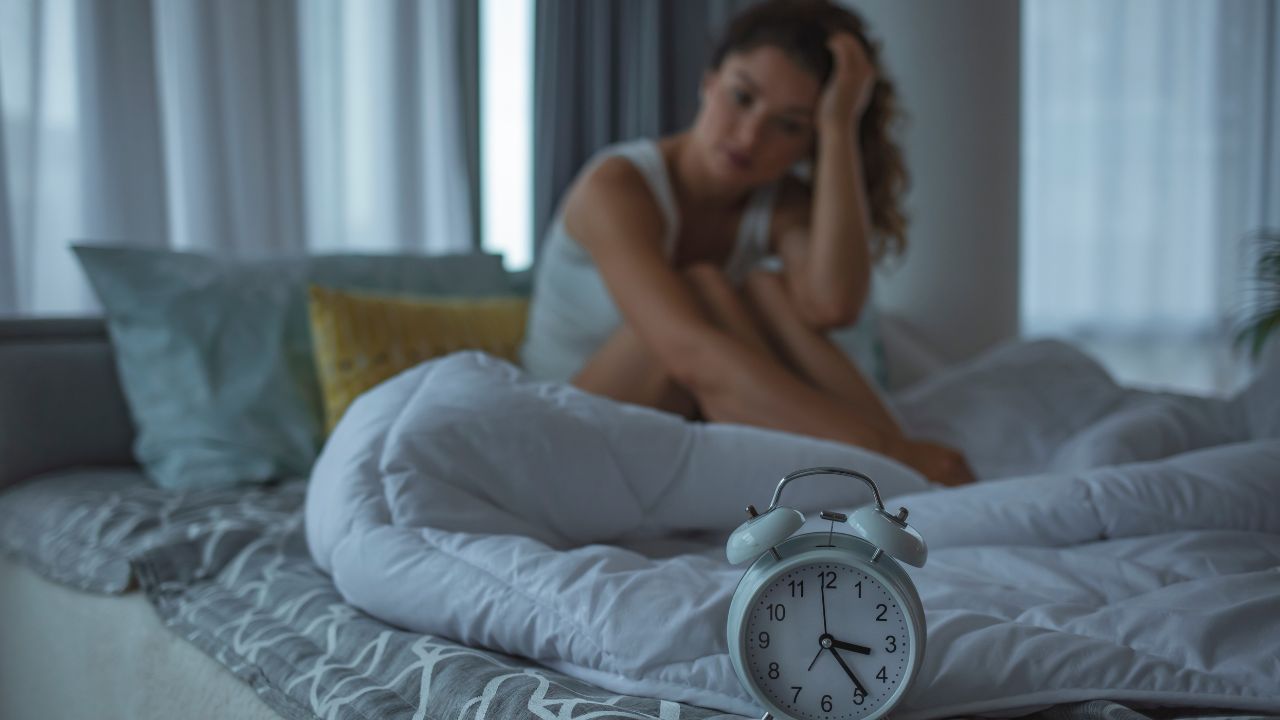Cracking the Code: Understanding Sleep Disorders
Introduction to Sleep Disorders
Unlocking the mysteries of a good night’s sleep is something we all strive for, but what happens when slumber becomes elusive? Sleep disorders can throw a wrench into our well-rested plans, disrupting our nights and leaving us feeling exhausted during the day. From restless tossing and turning to debilitating insomnia, these conditions can take a toll on both our physical and mental health. But fear not! In this blog post, we’re going to dive deep into the world of sleep disorders, decoding their different types, identifying common symptoms and causes, exploring diagnosis and treatment options – all while offering some practical tips for better sleep habits. So grab your favorite blanket and get ready to unravel the secrets behind those restless nights!
Types of Sleep Disorders
Sleep disorders encompass a wide range of conditions that can affect our ability to get the restful sleep we need. Each type of sleep disorder has its own unique set of symptoms and causes, making it important to understand the different classifications.
Insomnia is one common type of sleep disorder, characterized by difficulty falling asleep or staying asleep throughout the night. People with insomnia often feel tired and fatigued during the day, which can interfere with their daily activities.
Sleep apnea is another well-known sleep disorder, where breathing repeatedly stops and starts during sleep. This interruption in breathing can lead to loud snoring, gasping for air, and daytime drowsiness. It’s estimated that millions of people worldwide suffer from this condition.
Restless legs syndrome (RLS) is a neurological disorder that causes uncomfortable sensations in the legs while at rest, often accompanied by an irresistible urge to move them. This condition can make it difficult for individuals to fall asleep and stay asleep.
Narcolepsy is a chronic neurological disorder that affects the brain’s ability to regulate sleep-wake cycles. People with narcolepsy experience excessive daytime sleepiness and may have sudden attacks of uncontrollable sleep during the day.
Parasomnias are a group of disruptive sleep disorders characterized by abnormal behaviors or experiences during arousal from deep sleep or partial arousals between sleeps stages. Examples include nightmares, night terrors, and REM behavior disorder (acting out dreams).
These are just a few examples of the many types of sleep disorders that exist. It’s important to remember that each person’s experience with a particular type of disorder may vary greatly.
Understanding these different types allows healthcare professionals to accurately diagnose and treat individuals suffering from various forms of disordered sleeping patterns.
Common Symptoms and Causes
Sleep disorders can manifest in a variety of ways, with each individual experiencing different symptoms. However, there are some common signs that may indicate the presence of a sleep disorder.
One of the most prevalent symptoms is difficulty falling asleep or staying asleep throughout the night. This can lead to chronic fatigue and daytime sleepiness, making it difficult to concentrate or function effectively during the day. Some individuals may also experience frequent awakenings during the night, often accompanied by vivid dreams or nightmares.
In addition to these physical symptoms, emotional disturbances such as irritability and mood swings are frequently reported by those suffering from sleep disorders. These disruptions in normal sleep patterns can have a profound impact on mental health and overall well-being.
The causes of sleep disorders vary widely and can be influenced by both external factors and underlying medical conditions. Stress and anxiety are commonly associated with insomnia, while certain medications or substances like caffeine or alcohol can disrupt normal sleep patterns.
Other potential causes include hormonal imbalances, neurological disorders such as restless leg syndrome or narcolepsy, as well as environmental factors like excessive noise or an uncomfortable sleeping environment.
Understanding these common symptoms and causes is crucial for diagnosing and treating sleep disorders effectively. By working closely with healthcare professionals, individuals can find appropriate solutions tailored to their specific needs.
Impact of Sleep Disorders on Daily Life
Sleep disorders can have a profound impact on our daily lives, affecting various aspects such as physical health, mental well-being, productivity, and relationships. When we don’t get enough restful sleep or experience disrupted sleep patterns, it can take a toll on our overall functioning.
Physically, sleep disorders can lead to daytime fatigue and excessive tiredness. This not only affects our ability to perform tasks efficiently but also increases the risk of accidents and injuries. Lack of quality sleep has been linked to chronic conditions like obesity, diabetes, heart disease, and even certain types of cancer.
Mentally, inadequate sleep can impair cognitive function and memory consolidation. It becomes harder to concentrate on tasks at hand or retain information effectively. This can negatively affect academic performance or professional productivity.
Sleep disorders also impact emotional well-being. Chronic insomnia is often associated with increased levels of stress and anxiety. Mood swings become more common, leading to irritability and difficulty in managing emotions effectively.
Furthermore, relationships may suffer when one partner experiences a sleep disorder. The constant disruptions during the night might disturb their bed partner’s sleep as well – causing frustration or resentment over time.
Diagnosis and Treatment Options
When it comes to sleep disorders, getting an accurate diagnosis is crucial for finding the appropriate treatment. With so many different types of sleep disorders, it’s important to consult with a medical professional who specializes in sleep medicine.
The first step in diagnosing a sleep disorder involves discussing your symptoms and medical history with your doctor. They may also ask you to keep a sleep diary or undergo some tests, such as a polysomnography or multiple sleep latency test, to gather more information about your sleeping patterns.
Once a diagnosis has been made, there are various treatment options available depending on the type and severity of the sleep disorder. For some individuals, making simple lifestyle changes can greatly improve their quality of sleep. This could include implementing a consistent bedtime routine, creating a comfortable sleeping environment, avoiding stimulants like caffeine before bed, and practicing relaxation techniques.
In other cases, medication may be prescribed to help manage symptoms and promote better sleep. However, it’s important to note that medication should only be used under the guidance of a healthcare professional and is not always suitable for everyone.
Additionally, cognitive behavioral therapy for insomnia (CBT-I) has been shown to be effective in treating chronic insomnia by addressing negative thoughts and behaviors that contribute to poor sleep.
Finding the right diagnosis and treatment plan for your specific needs is essential in managing any type of sleep disorder effectively. So don’t hesitate to seek help from qualified professionals who can guide you towards restful nights and rejuvenating days!
Lifestyle Changes for Better Sleep
When it comes to combating sleep disorders, making certain lifestyle changes can significantly improve the quality of your sleep. Here are some tips and tricks to help you achieve a better night’s rest.
- Stick to a Consistent Sleep Schedule: Establishing a regular sleep routine can regulate your body’s internal clock, making it easier for you to fall asleep and wake up at the same time every day.
- Create a Relaxing Bedtime Ritual: Engaging in calming activities before bed, such as reading or taking a warm bath, signals to your body that it’s time to wind down and prepare for sleep.
- Make Your Bedroom Sleep-Friendly: Ensure that your bedroom is cool, dark, and quiet. Invest in comfortable bedding and pillows that support proper spinal alignment.
- Limit Exposure to Electronic Devices: The blue light emitted by smartphones, laptops, and tablets can disrupt melatonin production and interfere with your ability to fall asleep. Try turning off electronic devices an hour before bedtime.
- Watch What You Eat and Drink: Avoid consuming caffeine or alcohol close to bedtime as they can disrupt your natural sleep patterns. Opt for lighter meals at dinnertime instead of heavy or spicy foods that may cause indigestion.
- Exercise Regularly: Engaging in physical activity during the day helps promote better sleep at night but avoid intense workouts too close to bedtime as they may leave you feeling too energized.
By incorporating these lifestyle changes into your daily routine, you can create an environment conducive to restful nights of rejuvenating sleep.
Coping with a Loved One’s Sleep Disorder
Having a loved one who struggles with a sleep disorder can be challenging and sometimes even overwhelming. It’s important to remember that they are not intentionally trying to disrupt their sleep or yours. Understanding and empathy are key in supporting them through this difficult time.
Educate yourself about their specific sleep disorder. There are various types of sleep disorders, each with its own unique characteristics and challenges. By learning more about the condition, you can gain insight into what your loved one is experiencing and provide appropriate support.
Next, encourage open communication between you and your loved one. Let them know that you’re there for them and willing to listen without judgment or criticism. Sometimes just having someone to talk to can make all the difference.
Be patient with your loved one’s sleeping habits and routines. Understand that their erratic sleep patterns might affect both of you at times but try not to take it personally. Instead, find ways to adapt and accommodate their needs while taking care of yourself as well.
Supporting your loved one may also involve helping them establish healthy lifestyle habits conducive to better sleep hygiene. Encourage regular exercise, limit caffeine intake, promote relaxation techniques such as meditation or deep breathing exercises before bedtime.
Seek professional help if necessary. If the sleep disorder persists or worsens over time despite lifestyle changes, it may be beneficial for your loved one to consult a medical professional specializing in sleep disorders.
Remember, coping with a loved one’s sleep disorder requires patience, understanding, and compassion from both sides. By working together as a team and seeking appropriate support when needed, you can navigate through these challenges while maintaining a strong bond.
Conclusion
Understanding sleep disorders is crucial for maintaining good physical and mental health. Whether you are personally dealing with a sleep disorder or supporting a loved one who is, it’s important to educate yourself on the different types, symptoms, causes, and treatment options available.
Sleep disorders can have a significant impact on daily life, affecting everything from mood and energy levels to cognitive function and overall well-being. By recognizing the signs of a sleep disorder early on and seeking appropriate diagnosis and treatment, individuals can take positive steps towards improving their quality of life.
In addition to medical interventions, making lifestyle changes can greatly contribute to better sleep hygiene. Simple adjustments like establishing a consistent bedtime routine, creating a comfortable sleeping environment, avoiding stimulants before bed, and engaging in relaxation techniques can all promote healthier sleep patterns.
It’s also important to provide support for loved ones struggling with sleep disorders. Showing empathy and understanding while encouraging them to seek professional help can make all the difference in their journey towards better sleep.
Remember that each person’s experience with sleep disorders is unique. It may take time to find the right combination of strategies that work best for managing symptoms effectively. With patience and persistence, however, it is possible to crack the code on these challenging conditions.
By raising awareness about sleep disorders through education and destigmatization efforts,
we can create an atmosphere where those affected feel empowered to seek help without hesitation or shame.
So let us continue spreading knowledge about this vital aspect of our lives – because when we understand more about our own slumber habits as well as those around us who struggle nightly tossing-and-turning themselves awake into exhaustion by morning light only then will everyone rest easy again someday soon!


